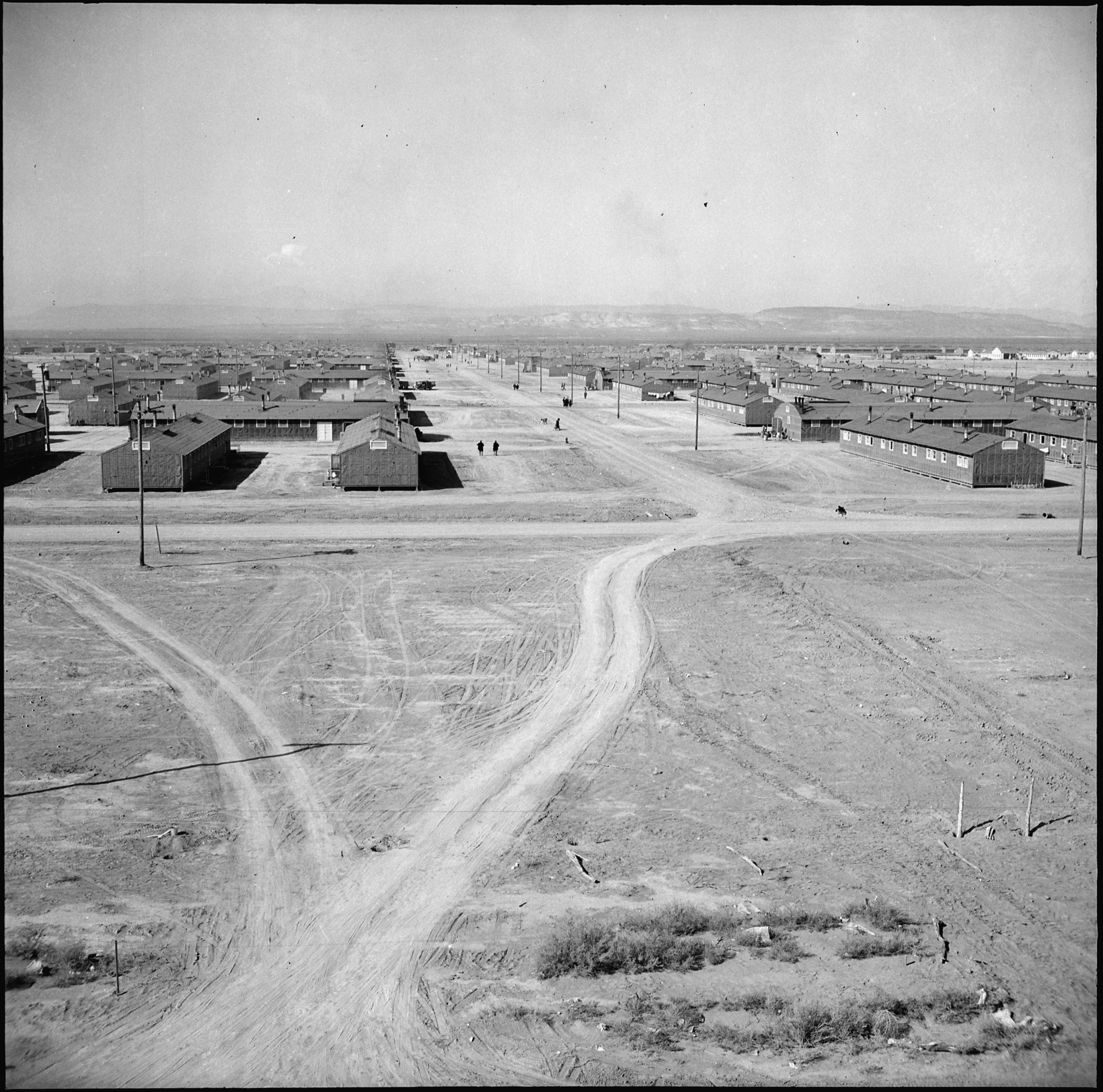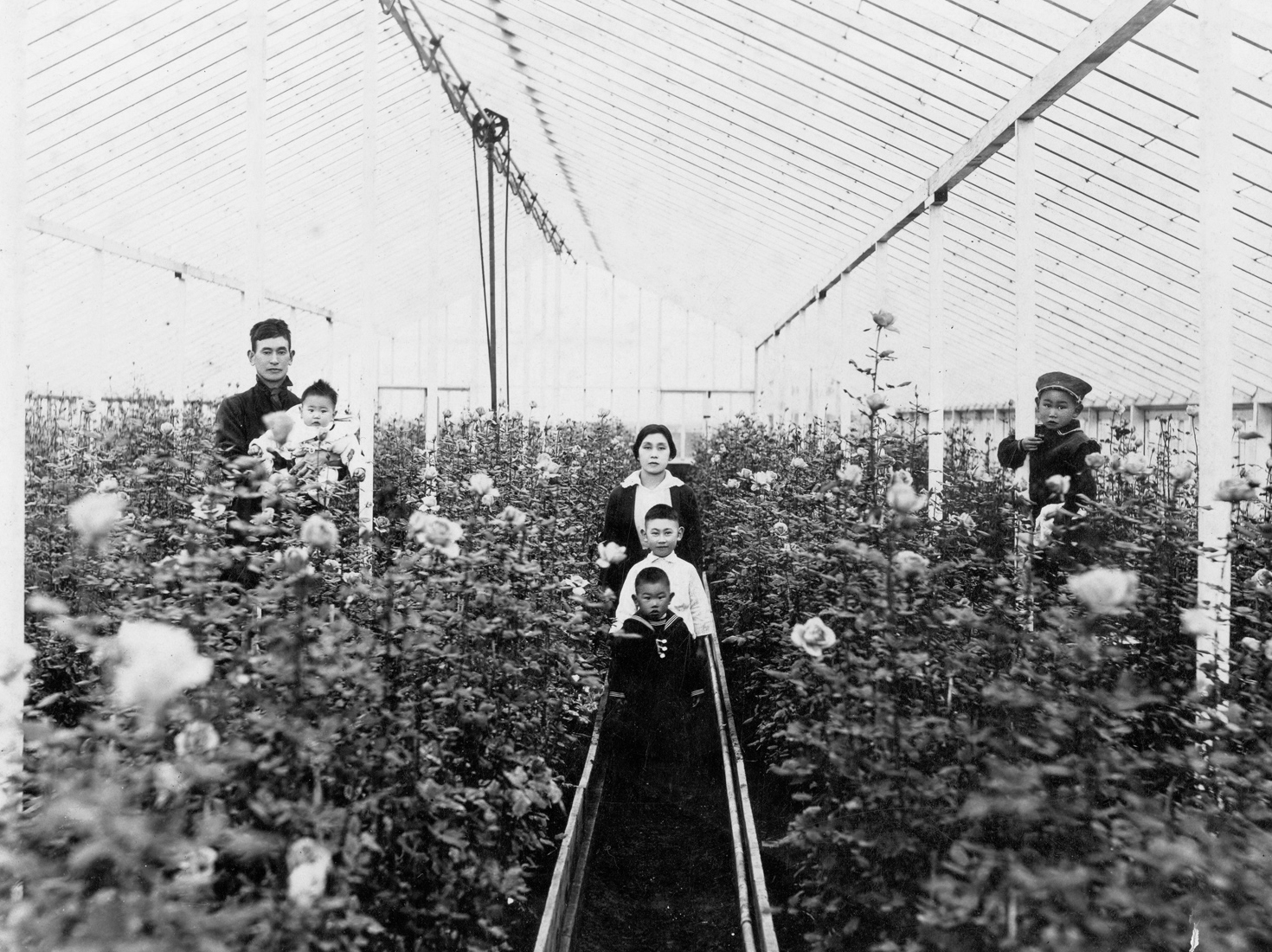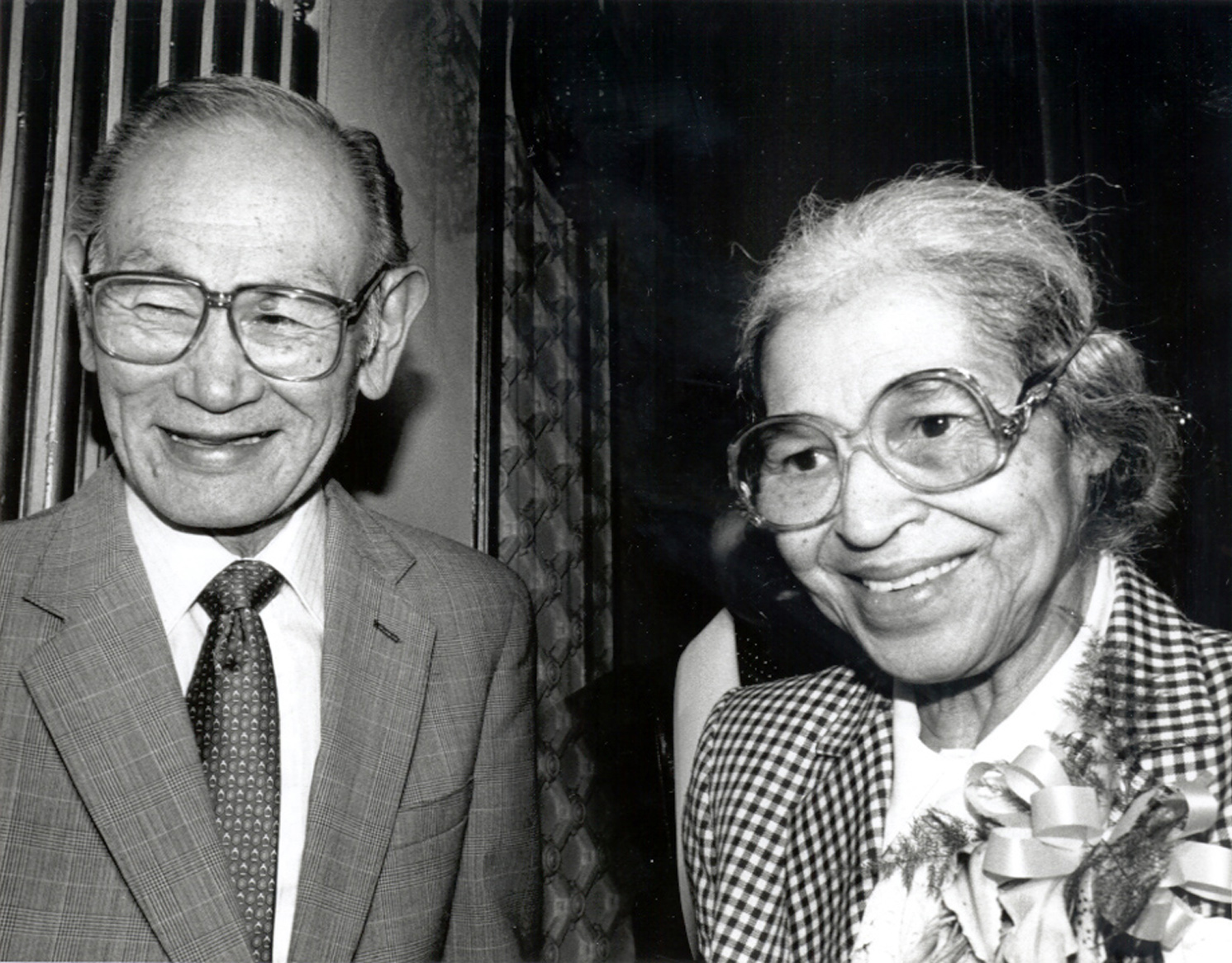2.6.1 Resisting Unconstitutional Order: Korematsu v. United States
The Asian American Education Project
Fred Korematsu and Rosa Parks at ACLU at Northern California Bill of Rights Day
Photo Credit: Shirley Nakao
Grade: 9-12Subject:
English Language Arts
Number of Activities: 6
This unit teaches students about the life of Fred Korematsu (1919-2005), the history of Japanese American incarceration (1942-1946), and the fight for civil rights during World War II (1939-1945). Students will consider the reaction to and effects of the September 11th attacks on Arab, Muslim, and South Asian communities in the context of what they have learned about the history and treatment of Japanese Americans during WWII. Students will critically read, analyze, and discuss a variety of texts. They will also write a creative and argumentative essay as their culminating task.
Students will:
- Explain the causes and outcomes of Korematsu v. United States (1944).
- Compare and contrast Japanese American incarceration with the treatment of Muslim Americans, Arab Americans, and South Asian communities after 9/11.
- Evaluate the significance of Korematsu’s legacy and his impact on the protection of civil liberties during times of war.
- What was Korematsu’s life like before World War II?
- What is Executive Order 9066?
- How was Korematsu’s decision to defy the order an act of resistance?
- Why did many in the Japanese American community initially not support Korematsu’s decision to challenge the exclusion order?
- What was the Supreme Court’s argument and ruling in the 1944 case Korematsu v. United States?
- What circumstances led to Korematsu’s case being reopened in 1983?
- What were the goals of the young lawyers who reopened Korematu’s case, along with the cases of other incarcerated Japanese Americans (including Minoru Yasui and Gordon Hirabayahi)?
- What were Korematsu’s goals for reopening his case?
- What did Judge Marilyn Patel conclude about the case?
- How did Korematsu’s case, along with those of Yasui and Hirabayahi, lead to the Civil Liberties Act of 1988?
- What is the significance of Korematsu’s case for future cases of government-led racial profiling justified by national security?

Fred Korematsu’s family was incarcerated at the Central Utah Relocation Center (also known as the Topaz War Relocation Center) in Millard County, Utah.
Image Credit: National Archives
Activity 1: Introducing Themes of Unit
- Ask students: “What does a conflict of interest mean?” Explain that a conflict of interest is when an individual’s personal interests (i.e., family, friendships, financial status, principles, etc.) could benefit them but also compromise their judgment, decisions, or actions.
- Have students complete a journal or “Quick-Write” for the following question in order to connect to students’ prior knowledge: Think of an example from your life, history, or current events when there was a conflict of interest (real or perceived). What was the conflict? What were the interests of each party? Why did they conflict?
- Tell students the following: “During times of war, there is often a perceived conflict of interest between safeguarding civil liberties and maintaining national security.”
- Show students the video entitled, “Japanese American Incarceration and the US Constitution.”
- Facilitate a discussion by asking the following questions:
- How did preserving civil liberties conflict with maintaining national security during World War II (1939-1945)?
- How did the United States government use “national security” and “loyalty” to justify incarcerating Japanese Americans?
- In what ways were the civil liberties of Japanese Americans threatened during World War II (1939-1945)?

Fred Korematsu as a child inside the family's rose nursery.
Photo Courtesy of Karen Korematsu
Activity 2: Learning About Fred Korematsu
-
Distribute the Reader’s Anticipation Guide Worksheet. Have students complete the “Before Reading” column of the worksheet, marking whether they agree/disagree with the five statements.
-
Have students read the essay entitled, “One Man Seeks Justice from a Nation: Korematsu v. United States Abridged Version.” Consider the following options:
- OPTION 1: Have students read the essay independently either for homework or during class time.
- OPTION 2: Read aloud the essay and model annotating.
- OPTION 3: Have students read aloud in pairs or small groups.
- Facilitate a discussion by asking the Discussion Questions listed above.
- Have students complete the “After Reading” column of the Reader’s Anticipation Guide Worksheet, marking whether the authors of the article agreed/disagreed with the statement. Have students include textual evidence in the middle column by providing quotes or paraphrases and citing the paragraph number.
- Show the video entitled, “A Message from Karen Korematsu” (Run time 04:02).
- Facilitate a discussion by asking the following questions:
- Why did California (and other states) designate a day to celebrate and honor Fred Korematsu?
- The official name of the January 30 celebration is “Fred Korematsu Day of Civil Liberties and the Constitution.” What significance does each part of this name hold?
- What new information did you learn from the video?
- In what ways does the video corroborate what you have learned so far about Japanese American incarceration?
- In what ways (if any) does the video contradict what you have learned so far about Japanese American incarceration?
- What role do citizens have in upholding civil rights?

Immigration protest in Baltimore
Activity 3:
Honoring Fred Korematsu’s Legacy
- Have students share ideas about the One Man Seeks Justice from a Nation: Korematsu v. United States Abridged Version article by using a “Think-Write-Pair-Share” activity:
- Think: Have students brainstorm and list ideas in response to the prompt: “Why is it important to remember Fred Korematsu’s life and legacy?”
- Write: Have students complete this sentence: “Fred Korematsu had a significant impact on the United States because …”
- Pair: Have students share their writing with a partner. Have students note ideas that were different from their own writing.
- Share: Have students share their writing with the class. Record student responses.
- Have students summarize Fred Koretmatsu’s achievements by prompting students to do the following: “Review the list we just generated and explain why we should honor Fred Koretmatsu.”
- Have students brainstorm ideas for honoring Korematsu’s legacy. Ensure that student responses are culturally-relevant and include an educational component. Optional: Have students plan an activity to celebrate Korematsu.
Activity 4: Connecting Korematsu’s Story to September 11, 2001
- Tell students the following: “On September 11, 2001 (referred to as 9/11), the United States was attacked through the use of hijacked airplanes to strike designated targets, including the World Trade Center in New York City. These attacks were coordinated by Al-Qaeda, an Islamic terrorist group. After 9/11, Americans were very scared about another possible terrorist attack. There were many negative messages about Arab Americans and Muslims living in the United States. The government detained and increased surveillance of Arab Americans and Muslims, because they were considered a national security threat.”
- Show students the video entitled, “‘Victimized Twice’: 9/11/2001, South Asian Americans & Islamophobia.”
- Facilitate a discussion by asking the following questions:
- How were Arab Americans, Muslim Americans, and South Asian Americans targeted following 9/11?
- How could the lessons from the incarceration of Japanese Americans be applied to the country after 9/11?
- What are similarities between 9/11 and Japanese American incarceration?
- What are differences between 9/11 and Japanese American incarceration?
- How do the arguments made in Korematsu v. United States in 1944 apply to 9/11?
- How do the arguments made when Korematsu challenged his conviction in 1983 apply to 9/11?
- Tell students the following: “Fred Korematsu spoke out after 9/11 in support of Americans being targeted by racial profiling. He urged the government and citizens not to repeat the mistakes of Japanese American incarceration. He filed several ‘friend of the court’ briefs (also known as amicus curiae) for Supreme Court cases in which he believed Americans were being unfairly detained. In his briefs, he argued that the U.S. government’s security measures in the name of “national security” were reminiscent of the unconstitutional treatment of Japanese Americans during WWII.”
- Have students read the opinion article by Fred Korematsu entitled, “Do we really need to relearn the lessons of Japanese American internment?”
- Create and display the following chart for all to see:
Textual Evidence / Quotations
(Select Five) |
Analysis
(Why do I find this quote interesting or important?) |
|
1. |
1 |
|
2. |
2. |
|
3. |
3. |
|
4. |
4. |
|
5. |
5. |
- Have students select five important passages/quotes from the article and write them in the left column. Have students analyze and respond to the quote by noting why they find the quote interesting or important in the right column.
- Have students pair-share about one or two of their selected quotes and explain their analysis.
- Facilitate a discussion by asking the following questions:
- What is the significance of Korematsu speaking out on behalf of others experiencing racial profiling?
- How does his experience give credibility to his argument?
- What do Korematsu’s efforts reveal about cross-racial solidarity?
Activity 5: Deepening Understanding of Korematsu’s Story through Socratic Seminar
- Have students engage in a “Socratic Seminar” in preparation for the culminating task. Tell students the following: “A Socratic Seminar is a student-led discussion, designed to lead toward a deeper understanding of a topic/text. This differs from debate, since a debate ends with a winner and loser. After a successful Socratic Seminar, all are winners, including the instructor, because all have an opportunity to engage each other, and the texts, in a new and meaningful way.”
- Have students review their notes from the texts read during this lesson:
- Video: Japanese American Incarceration and the US Constitution
- Article: One Man Seeks Justice from a Nation: Korematsu v. United States Abridged Version
- Video: A Message from Karen Korematsu
- Video: Victimized Twice’: 9/11/2001, South Asian Americans & IslamophobiaArticle: Do we really need to relearn the lessons of Japanese American internment?
- Article: Do we really need to relearn the lessons of Japanese American internment?
- Have students complete the following pre-discussion exercise:
- Evidence: Have students write at least one quote or paraphrase from one of the texts that stands out to them.
- Question: Have students write at least one question they have about one of the texts or about the history of Japanese American incarceration.
- Synthesis: Have students write at least one connection they see between two different texts.
- Have students bring their texts/notes and form a large circle in the room. Display and discuss the following guidelines/expectations. Encourage students to listen carefully and take notes.
- Speak so that all can hear you.
- Listen closely.
- Speak without raising hands.
- Refer to the text.
- Talk to each other, not just to me (the teacher).
- Ask questions. Don’t stay confused.
- Invite and allow others to speak.
- Respect other peoples’ viewpoints and ideas.
- Know that you are responsible for the quality of the conversation.
- Facilitate a Socratic Seminar by inviting one student to start the Seminar using their writing from the pre-discussion exercise.
- Have students reflect on and evaluate the process by asking the following questions:
- How has your understanding of the texts changed as a result of the Seminar?
- What parts of the discussion were most engaging for you? What parts were the least engaging?
- What new questions have emerged for you as a result of the seminar?

Fred Korematsu and his family.
Image Credit: Courtesy of the family of Fred T. Korematsu,
CC BY 2.0, via Wikimedia Commons
Activity 6: Evaluating the Legacy of Fred Korematsu
- Distribute the RAFT Essay Writing Prompt. Have students read the following three options for an argumentative essay.
|
Role |
Audience |
Format |
Topic |
|
A. Defense Attorney |
U.S. Supreme Court |
Speech |
In the case Korematsu v. United States (1944),
Korematsu’s defense attorneys (lawyers) have
the opportunity to present their closing
arguments. Present a persuasive speech, with
evidence in favor of Fred Korematsu, showing
that the U.S. government was wrong in the
incarceration of Japanese Americans during
World War II.
|
|
B. Student |
School District Superintendent
|
Letter or Speech |
California declared January 30th “Fred
Korematsu Day,” to remember a man who
fought for Japanese American civil rights
during World War II. Write a letter or speech to
the school district superintendent, telling them
why and how your school should recognize the
day in his memory.
|
|
C. Fred Korematsu |
U.S. Congress
|
Speech |
After 9/11, Fred Korematsu has the opportunity
to speak to the United States Congress. Write a
speech, explaining the importance of protecting
civil rights for Arabs, Middle Easterners, South
Asians and Muslims in America. How should
we as a country protect both national security
and individual civil rights?
|
- Distribute the worksheet entitled, “Essay Planner.” Have students use the worksheet to plan their essay. Tell students that the essay should be written from a first-person point of view.
- Have students write a hook (introductory sentence) in the 1st row.
- Have students write a thesis statement (main argument) in the 2nd row.
- Have students write three main ideas in each column of the 3rd row.
- Have students write two supporting details or pieces of specific textual or historical evidence and their analysis of that evidence in the 4th-7th rows.
- Have students write a conclusion or call to action about what they want their audience to think or do differently after hearing or reading the message in the 8th row.
- Have students self-assess their essays, using the RAFT Essay Rubric worksheets.
- Facilitate a discussion by asking the following questions:
- What have you learned from this unit?
- How have your ideas developed or evolved about the history of Japanese American incarceration during World War II?
- How should the government protect both civil liberties and national security during wartime?
- What is the legacy of Fred Korematsu? Why is his story still significant today?
- What can Americans do to prevent future incidents like Japanese American incarceration?
Extension Activities
- Have students read the article entitled, “US Supreme Court Justice Declares Mass Internment Inevitable.” Have students summarize Justice Antonin Scalia’s (1936-2016) argument and the evidence he uses to support his argument. Facilitate a discussion by asking students, “Do you agree with Justice Scalia’s argument? Why or why not? What can Americans do to prevent mass internment from being ‘inevitable’?” Have students write an op-ed responding to Justice Scalia’s comments.
- Have students read the article entitled, “Who Took the Rap? A Call to Action.” Have students summarize the author’s argument and the evidence that he uses to support his argument. Have students do a close reading of these two poems: (1) “After Words: September 11, 2001” and (2) “Why Children Did Not Knock at My Door on Halloween This Year.” Facilitate a discussion by asking students, “What is the message of this poem? How does the author convey this message?”
Carter, Tom. “US Supreme Court justice declares mass internment inevitable.” The Falling Darkness. The Liberty Beacon. 11 Feb. 2014. Web.
Funabiki, Kiku. “Silence…No More.” Teacher’s Guide: The Bill of Rights and the Japanese American World War II Experience. National Japanese Historical Society, 1992. 44. Print.
CCSS.ELA-LITERACY.RL.9-10.1:
Cite strong and thorough textual evidence to support analysis of what the text says explicitly as well as inferences drawn from the text.
CCSS.ELA-LITERACY.RI.9-10.3:
Analyze how the author unfolds an analysis or series of ideas or events, including the order in which the points are made, how they are introduced and developed, and the connections that are drawn between them.
CCSS.ELA-LITERACY.RI.9-10.4:
Determine the meaning of words and phrases as they are used in a text, including figurative, connotative, and technical meanings; analyze the cumulative impact of specific word choices on meaning and tone.
CCSS.ELA-LITERACY.RI.9-10.7:
Analyze various accounts of a subject told in different mediums, determining which details are emphasized in each account.
CCSS.ELA-LITERACY.W.9-10.1:
Write arguments to support claims in an analysis of substantive topics or texts, using valid reasoning and relevant and sufficient evidence.
- Introduce precise claim(s), distinguish the claim(s) from alternate or opposing claims, and create an organization that establishes clear relationships among claim(s), counterclaims, reasons, and evidence.
- Develop claim(s) and counterclaims fairly, supplying evidence for each while pointing out the strengths and limitations of both in a manner that anticipates the audience’s knowledge level and concerns.
- Use words, phrases, and clauses to link the major sections of the text, create cohesion, and clarify the relationships between claim(s) and reasons, between reasons and evidence, and between claim(s) and counterclaims.
- Establish and maintain a formal style and objective tone while attending to the norms and conventions of the discipline in which they are writing.
- Provide a concluding statement or section that follows from and supports the argument presented.
CCSS.ELA-LITERACY.W.9-10.4:
Produce clear and coherent writing in which the development, organization, and style are appropriate to task, purpose, and audience.
CCSS.ELA-LITERACY.W.9-10.5:
Develop and strengthen writing as needed by planning, revising, editing, rewriting, or trying a new approach, focusing on addressing what is most significant for a specific purpose and audience.
CCSS.ELA-LITERACY.SL.9-10.1:
Initiate and participate effectively in a range of collaborative discussions (one-on-one, in groups, and teacher-led) with diverse partners, building on others’ ideas and expressing their own clearly and persuasively.
- Come to discussions prepared, having read and researched material under study; explicitly draw on that preparation by referring to evidence from texts and other research on the topic or issue to stimulate a thoughtful, well-reasoned exchange of ideas.
- Work with peers to set rules for collegial discussions and decision-making (e.g., informal consensus, taking votes on key issues, presentation of alternate views), clear goals and deadlines, and individual roles as needed.
- Propel conversations by posing and responding to questions that relate the current discussion to broader themes or larger ideas; actively incorporate others into the discussion; and clarify, verify, or challenge ideas and conclusions.
- Respond thoughtfully to diverse perspectives, summarize points of agreement and disagreement, and, when warranted, qualify or justify their own views and understanding and make new connections in light of the evidence and reasoning presented.
CCSS.ELA-LITERACY.SL.9-10.4:
Present information, findings, and supporting evidence clearly, concisely, and logically (using appropriate eye contact, adequate volume, clear pronunciation) such that listeners can follow the line of reasoning and the organization, development, substance, and style are appropriate to purpose (e.g., argument, narrative, informative, response to literature presentations), audience, and task.






